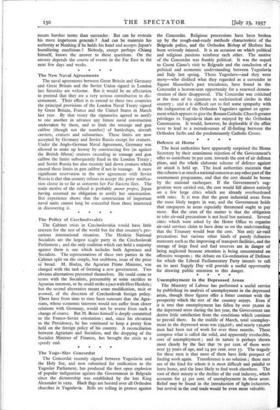The New Naval Agreements The naval agreements between Great Britain
and Germany and Great Britain and the Soviet Union signed in London last Saturday are welcome. But it would be an affectation to pretend that they are a very serious contribution to dis- armament. Their effect is to extend to these two countries the principal provisions of the London Naval Treaty signed by Great Britain, France and the United States in March last year. By that treaty the signatories agreed to notify to one another in advance any future naval construction undertaken by them, and to limit the tonnage and gun calibre (though not the number) of battleships, aircraft carriers; cruisers and submarines. These limits are now accepted by Germany and Soviet Russia except for cruisers. Under the Anglo-German Naval Agreement, Germany was allowed to make up leeway by constructing five (as against the British fifteen) cruisers exceeding in tonnage and gun calibre the limits subsequently fixed in the London Treaty ; and Soviet Russia has also recently laid down cruisers which exceed those limits in gun calibre if not in tonnage. A more significant reservation in the new agreement with Soviet Russia is that that country refuses to accept the prior notifica- tion clause in so far as concerns her Far Eastern fleet. The main motive of the refusal is probably amour propre, Japan having assumed no obligation to notify her construction. But experience shows that the construction of important naval units cannot long be concealed from those interested in discovering it.
* * * *






























































 Previous page
Previous page